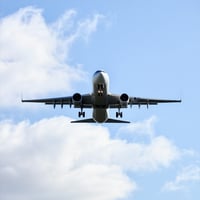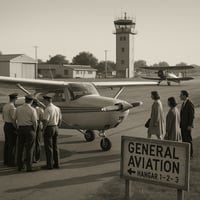Captain Sherry Walker Is Right: Putting Pilot Rights and Safety First Introduction In a recent...
The 1,500-Hour Rule and Reduced ATP: A False Sense of Safety and a Declining Pilot Pool
The 1,500-Hour Rule and Reduced ATP: A False Sense of Safety and a Declining Pilot Pool
The 1,500-hour rule and the Reduced ATP program were introduced under the guise of improving aviation safety. However, these regulations have done little to create better pilots and have instead fostered a false sense of experience. The rule forces aspiring airline pilots to accumulate flight hours in ways that often do not enhance their operational competency, while the Reduced ATP program benefits only select groups without addressing the core issue: the quality of flight training.
Beyond that, the current flight instruction pipeline may be actively degrading the pilot pool—with many CFIs simply flying to reach airline minimums, rather than focusing on developing high-quality aviators. This system has set the stage for a long-term safety issue that has not yet fully manifested but may soon be realized in airline operations.
The 1,500-Hour Rule: A Reactionary Regulation
The 1,500-hour rule was implemented in 2013 following the Colgan Air Flight 3407 crash in 2009. The accident, caused by pilot fatigue, training deficiencies, and improper stall recovery, led Congress to mandate that all Part 121 airline pilots obtain an Airline Transport Pilot (ATP) certificate, requiring a minimum of 1,500 flight hours.
At face value, the rule appears to ensure pilots gain significant experience before entering commercial airline operations. However, the number of hours logged does not necessarily translate to meaningful experience. Worse, it has pushed thousands of aspiring airline pilots into a time-building trap that prioritizes quantity over quality.
To alleviate some of the burdens, the Reduced ATP program was introduced, allowing military pilots and graduates of FAA-approved university flight programs to qualify for an ATP certificate with as few as 750 hours. But this program benefits only a select few, leaving the rest of the pilot pipeline to accumulate hours in ways that may not adequately prepare them for airline operations.
The Quality vs. Quantity Debate: How Pilots Build Their Hours
The biggest flaw in the 1,500-hour rule is that it does not account for how those hours are obtained. Some methods provide valuable real-world experience, while others do little to prepare pilots for complex airline operations.
The Flight Instructor Bubble: A Training Ground for Bad Habits
Becoming a Certified Flight Instructor (CFI) is the most common way for pilots to reach 1,500 hours. While instructing can reinforce basic skills, it rarely exposes pilots to the challenges of real-world flight operations.
• Most flight instruction occurs in VFR conditions with limited exposure to IFR operations, cross-country logistics, or high-density airspace.
• Flight instructors often fly within the same geographic region and repeat the same maneuvers daily, offering little variation or practical experience.
• Many CFIs are more focused on accumulating hours than properly training students, which has led to a deterioration in pilot quality.
• Because of this, poorly trained student pilots move on to become CFIs themselves, perpetuating a cycle of subpar training.
This means that many airline pilots today are coming from an environment that does not prepare them for real operational decision-making—yet they are viewed as more qualified simply because of their total flight hours.
Banner Towing and Aerial Survey: Better Training for Airline Operations
In contrast, pilots who gain experience through banner towing, aerial surveying, pipeline patrol, or cargo flying are exposed to real-world flying scenarios that better prepare them for commercial aviation.
• These pilots routinely deal with uncontrolled airspace, dynamic weather, and fuel management—essential skills in airline flying.
• Unlike CFIs who mostly fly within training bubbles, these pilots are navigating different regions, working with ATC, and handling operational challenges daily.
• Single-pilot operations in survey or cargo flying force pilots to think independently and make real-time decisions, rather than relying on a controlled syllabus.
Despite these clear benefits, the current regulatory structure does not recognize the difference in experience quality. A CFI who spent 1,500 hours flying loops around the pattern is considered just as qualified as a cargo pilot who has flown in complex IFR conditions across the country.
Is the 1,500-Hour Rule Making Flying Safer? The Data Says No.
If the 1,500-hour rule truly improved safety, we would expect to see a significant reduction in aviation accidents. However, the data does not support this claim.
• U.S. vs. European Safety Rates: European pilots can qualify for airline jobs with as few as 250 hours through structured competency-based training, yet European airlines do not experience higher accident rates than those in the U.S.
• No Significant Decline in Incidents: Despite the rule, pilot error remains a leading cause of aviation incidents, suggesting that more hours do not necessarily create better pilots.
• A Worsening Pilot Shortage: The rule has contributed to a massive decline in regional airline hiring, forcing airlines to lower hiring standards once pilots reach the 1,500-hour minimum.
In other words, the rule has created a delay in hiring without a clear benefit to safety.
A Hidden Crisis: Flight Instruction Is Creating Unqualified Pilots
A more dangerous consequence of the 1,500-hour rule is that it has flooded flight schools with instructors who have no passion for teaching and are simply buying time.
• Many CFIs are only instructing to reach their 1,500-hour requirement, meaning their students are not receiving the highest quality training.
• Poorly trained student pilots become CFIs themselves, creating a domino effect of subpar instruction that degrades the overall pilot pool.
• The effects of this may not be fully realized yet, but as these pilots move into airline operations, deficiencies in their foundational training could lead to an increase in accidents and operational errors.
Airlines are already seeing the effects. Many new airline pilots struggle with decision-making, lack fundamental IFR knowledge, and have trouble adapting to real-world airline operations. This is not a problem of total hours—it’s a problem of how those hours were earned.
The Solution: Competency-Based Training
Rather than forcing pilots to log arbitrary flight hours, the FAA should adopt a competency-based training model similar to what is used in Europe and by leading international airlines.
• Pilots should be assessed on their actual skills and decision-making abilities, rather than a blanket hour requirement.
• More structured airline transition programs should replace the current free-for-all time-building process.
• High-quality simulator training and scenario-based evaluation should play a bigger role in determining a pilot’s readiness.
By shifting away from an outdated, hour-based system and toward actual skill assessment, the industry can ensure that pilots entering the airlines are truly prepared—not just pilots who hit a number.
Conclusion: The 1,500-Hour Rule Is a Broken System
The 1,500-hour rule was meant to enhance safety, but instead, it has created an illusion of experience while exacerbating the pilot shortage and degrading training quality.
• Flight instructing has become a time-building loophole that produces airline pilots with little real-world flying experience.
• Pilots in banner towing, aerial survey, and cargo flying gain far more practical skills than those who spend 1,500 hours in a training environment.
• The real crisis is the decline in training quality, as CFIs with no passion for teaching create poorly trained pilots who eventually become airline captains.
The longer the industry ignores this reality, the more likely it is that these hidden training deficiencies will manifest in major safety incidents. The solution is not more hours, but better training. The FAA must rethink the 1,500-hour rule and replace it with a competency-based approach—before the next crisis proves it was the wrong move all along.



